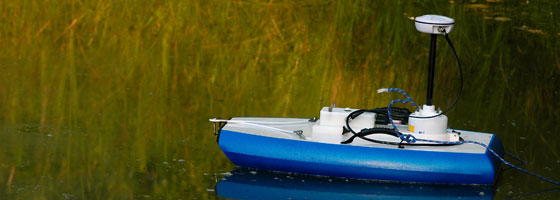The right solution for stream discharge measurement

River discharge is an important property in hydrology and is commonly measured in many rivers and streams. A river’s discharge, or volumetric flow rate, is a measure of the amount of water that passes through a cross section of the water body per unit of time.
Estimating discharge has historically involved propeller-driven velocity sensors, rough estimates of cross sectional area, and labor-intensive computation. The introduction of modern Doppler technology, however, has significantly enhanced the accuracy and simplicity of acquiring reliable water velocity and discharge data.
Doppler sensors measure the shift in frequency of sound energy as it moves through a medium, also known as the Doppler shift. Specifically, the velocity sensors of today emit ultrasonic acoustic bursts of known frequency that are echoed back to the transducers by particulate matter in the water. The measured reverberation frequency is used to calculate the relative speed of the water, which is assumed to be moving at the same speed as the particles that reflect the sound.
Two general types of acoustic Doppler velocity sensors exist: ones that measure “point” velocities of extremely small volumes of water, and those that can produce a “profile” of water velocity over a range of depths. The former are high-frequency devices called acoustic Doppler velocimeters, or ADVs. The latter typically use lower frequencies that allow for a larger measurement range and are called Acoustic Doppler current profilers (denoted ADCPs or ADPs).
There are many variations of both types of sensors, but only a few automatically use velocity, bathymetry, and position measurements to calculate and directly output discharge data. For wadeable streams, the handheld SonTek FlowTracker consists of a side-looking Doppler probe and a mechanical wading rod. For open channels, the towable SonTek RiverSurveyor M9 combines advanced dual-frequency technology and precision GPS. Both are easily operated by one person and never require calibration.
Open-Channel Discharge: RiverSurveyor M9The RiverSurveyor M9 represents the latest in discharge measurement technology. It combines four 3 MHz beams and four 1 MHz beams with automated frequency-hopping and precision bandwidth control to provide shallow-to-deep (0-30 meter) velocity measurements. Additionally, a 500 kHz vertical beam helps extend the depth measurement range to 80 meters.
Real-time kinematic GPS allows for position data within ±3 cm accuracy. Bluetooth connectivity provides a wireless link from the M9 to a laptop or smart phone. Bathymetric, GPS, and velocity data can be transmitted and displayed graphically in real time when using a laptop within 200 meters or a smart phone within 60 meters of the M9.
The M9 requires no user-defined algorithms to change cell sizes mid-measurement. Onboard microprocessing automates cell size adjustments based on water depth. The M9 processes and stores all data independent of any other device.
Wadeable Streams: FlowTrackerHydrologist transects a stream with the SonTek FlowTracker and a USGS tagline. The FlowTracker is designed for discharge measurements in wadeable streams and rivers.
The SonTek FlowTracker is an ADV designed for wadeable stream and river discharge measurements. 2D and 3D configurations are available to measure velocities down to 0.001 m/s in depths as shallow as 2 cm.
Users can set the FlowTracker to conform to either U.S. Geological Survey or International Organization for Standardization methods. The FlowTracker incorporates six velocity measurement and three discharge computation protocols.
Quality checks help ensure that erroneous data is not collected and used to estimate discharge. The waterproof handheld display even makes suggestions based on adaptive QC criteria to retake specific velocity measurements along a transect.
The FlowTracker automatically provides an uncertainty calculation for each discharge measurement that includes the uncertainty due to the instrument’s resolution, the samples taken, and the propagation of error through the discharge computation.
Additionally, the ADV is outfitted with real-time velocity viewing capabilities, which make the instrument useful for spot sampling of water currents if general purpose velocity data is desired.




0 comments